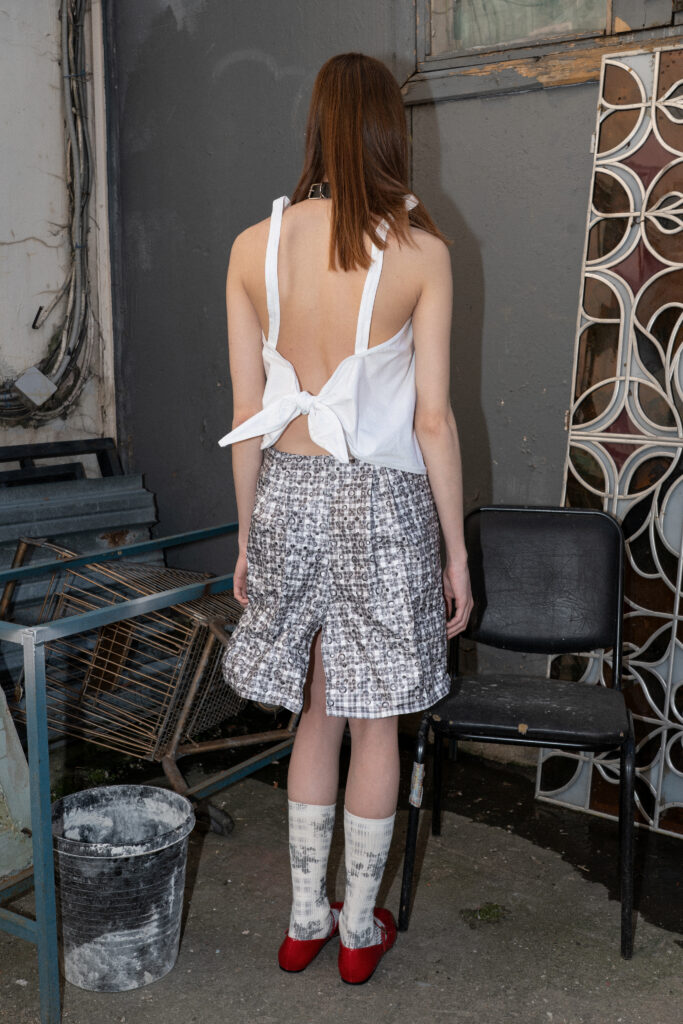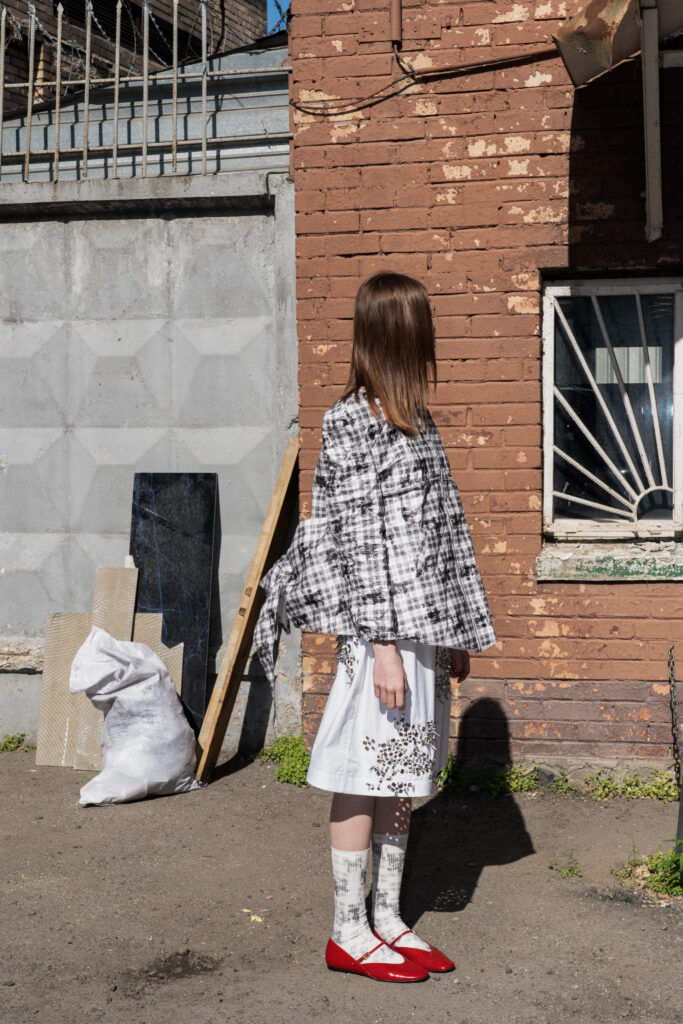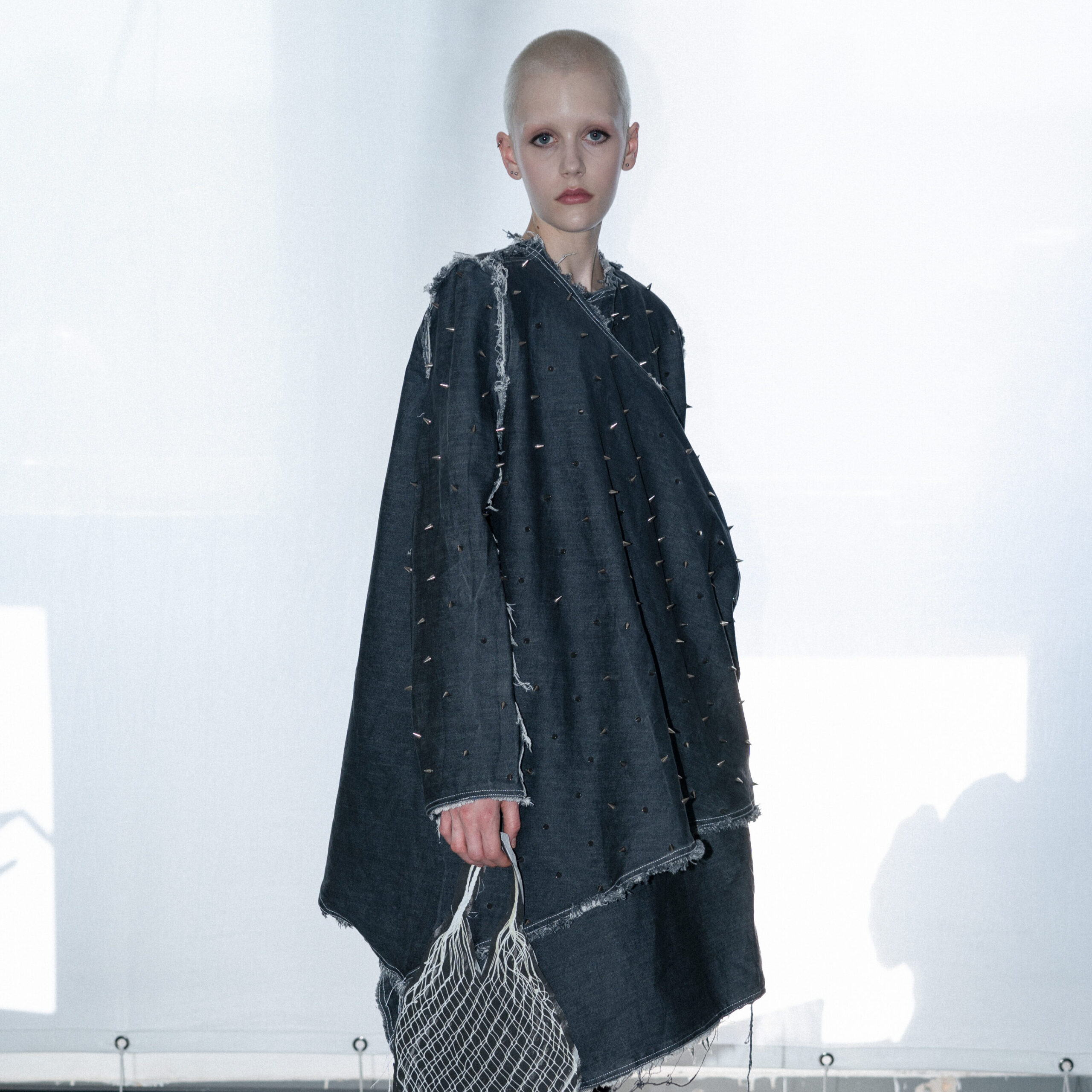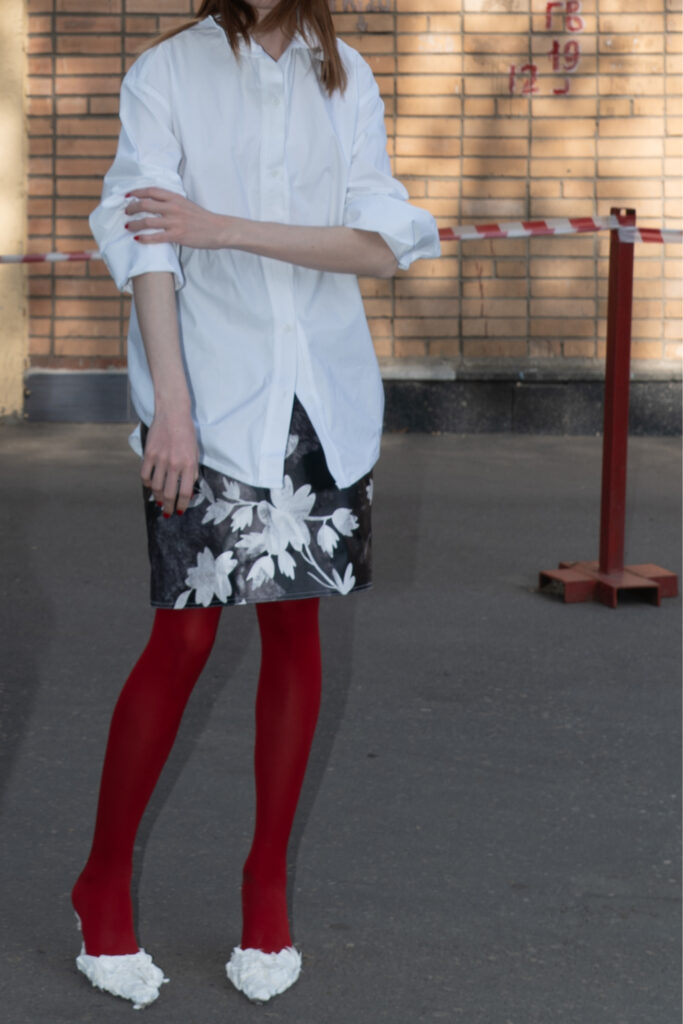Where Fashion Becomes Memory
Fashion can whisper or it can roar. For Sergey Gorbunov, it does something else entirely — it lingers. His work does not simply clothe the body; it sculpts emotions, histories, and fragments of memory into wearable form. To him, garments are not surfaces but structures. They exist as both shield and revelation, inviting the wearer to inhabit a story larger than themselves.
His BA collection, titled People of Changes, crystallizes this philosophy. Rooted in independent Soviet documentary photography from the 1980s, it emerges from an era defined by paradox. These images captured ordinary lives under extraordinary restrictions, when freedom itself felt like a distant horizon. In those frozen frames, Sergey saw something urgent and deeply human: the quiet defiance of simply existing, the strength in longing, the poetry of survival.
“In my own design projects, I am trying to speak about things that are important to me,” Sergey explains. “It can be a social or political problem, a historical context, an art that I like, music, or even subcultural phenomena. It is always about my passions.”
This devotion to sincerity shapes his design philosophy, which he describes in three words: Sculptural Wearable Art. His garments are not mere adornments but conversations between form and feeling. They take shape on the body the way sculpture takes shape in space — commanding, intentional, and full of resonance.
For Sergey, the imagined wearer is never a faceless consumer. He sees his designs on people who already possess a strong inner voice. “I imagine my designs on someone with their own voice. Someone who is true to themselves,” he says. In this vision, fashion becomes less about transformation and more about amplification — a way to project what is already authentic within.
Material choice becomes equally symbolic. Recently, Sergey has been drawn to Tyvek, a fabric with the tactile qualities of paper but the endurance of cloth. Fragile yet resilient, ephemeral yet lasting, it mirrors the contradictions in his inspirations. The very act of working with it becomes a metaphor for his process: crafting strength out of delicacy, permanence out of impermanence.
If one searches for the roots of Sergey’s creativity
they lead not to fashion alone but to art history. His studies of painters, sculptors, and visionaries across centuries have guided his sensibilities. “The studies of art history have influenced my creative journey the most. The vision and experience of different artists,” he reflects. The gallery, in this sense, becomes as formative as the atelier.
And yet, Sergey resists the urge to fix himself to one aesthetic identity. “I don’t have my own aesthetic, I’m still finding my own voice but it’s not a goal for me,” he admits. “What I know is that I want to be true to myself.”
This refusal to settle into one style is less about uncertainty than about expansiveness. His work remains alive, able to shift with new influences and encounters.
If his creations could speak, Sergey hopes they would say very little. “It would say nothing,” he insists. “I hope it could briefly touch something in others, so they can feel joys and sorrows in the created pieces.” In a world that demands constant noise, Sergey chooses quiet — a quiet powerful enough to move.
At its core, his message is simple: creating is a way of being heard. Each collection becomes a translation of his understanding of the world, his passions, and his internal dialogue. His work is an open invitation — to look, to feel, to listen.
Looking ahead, Sergey is unequivocal about his openness to collaboration. “Yes, yes, and YES,” he says when asked about editorial shoots, special projects, and creative campaigns. For an artist who believes garments are conversations, it is natural that he would want to exchange perspectives with others, layering voices into the architecture of his designs.
People of Changes is not merely a graduation collection.
It is a manifesto in fabric, a bridge between history and the present, a meditation on fragility, freedom, and form. In Sergey Gorbunov’s hands, fashion transcends its utilitarian role to become something more profound: an act of witness, a sculptural gesture, a touch of humanity in material form.
In the end, Sergey Gorbunov’s work is not about making noise but about creating echoes. Echoes of the past, where lives were shaped under constraint yet still dreamed of freedom. Echoes of resilience, of people who dared to carry their truth even when it could not be spoken aloud. Echoes of unspoken sorrows and fleeting joys, stitched delicately into the folds of fabric.


Perhaps this is where the true power of his vision lies: in reminding us that clothing is not merely a surface, nor a fleeting trend, but a vessel — one that carries memory, art, and humanity. Just as history is passed through images and stories, his garments become living archives. They speak to the soul of change itself: quiet, persistent, unstoppable.
To wear a piece by Sergey is not just to adorn oneself but to participate in a dialogue with history, with identity, with truth. His collections insist that fashion can linger beyond the runway, becoming sculpture in motion, a mirror of inner landscapes, and a witness to the shifting currents of time.

The Enduring Soul of Change
his work does not end when the garment is finished — it begins again each time it is worn, each time it is seen, each time it is felt. In this way, the echoes he creates ripple outward, connecting past to present, silence to expression, fragility to strength. In the language of fabric, Sergey Gorbunov reminds us that fashion, like art, like history, holds within it the enduring soul of change.
Check out more icons around the world
